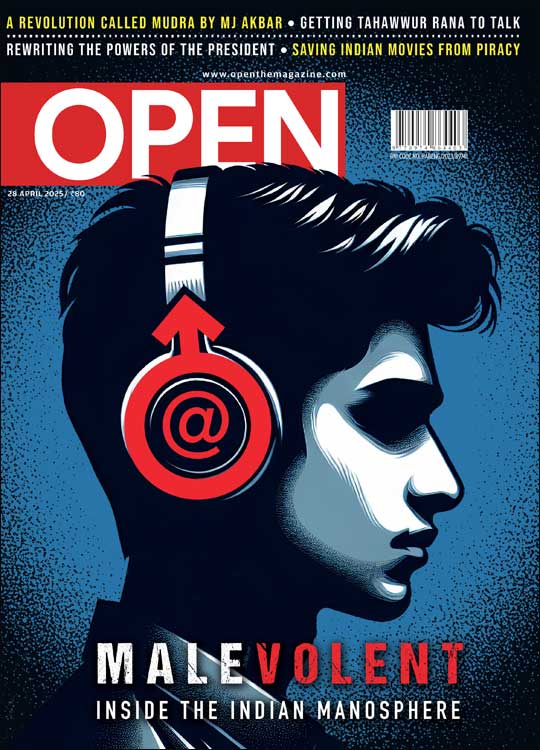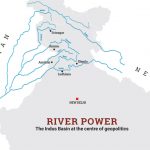Last of the Hippies
The Rainbow Family of Living Light is a fringe community that claims to have no rules
 Chinki Sinha
Chinki Sinha
 Chinki Sinha
|
08 Mar, 2013
Chinki Sinha
|
08 Mar, 2013
/wp-content/uploads/2015/11/rainbow1.jpg)
The Rainbow Family of Living Light is a fringe community that claims to have no rules
GOKARN, KARNATAKA, AND ALLAHABAD, UP ~ “Welcome to Rainbow,” says the policeman, lounging on his motorbike, looking bored. He seems unaware that he holds the invisible key to a commune whose members believe they are living the perfect life even though they have sworn off sex temporarily in tribute to the Kumbh Mela underway closeby.
“You can’t stay the night here, you are Indian,” he says, barring me from the campsite, “What is there to see, anyway?”
But then he says, “Go on. But leave soon.”
The Uttar Pradesh administration has forbidden natives from entering the Rainbow Family of Living Light’s love camp on the outskirts of Allahabad. Indians, it fears, may trouble the community.
Who are these Rainbow people?
Inside a tent, a man with dreadlocks tells me, “I am my own rainbow.”
I quote Bob Marley to him.
“…to the rescue, here I am. I am a rainbow, too.”
He smiles.
“Welcome home, sister,” he says.
The Rainbow Family, described by a 1993 Rolling Stone article as ‘the largest best coordinated nonpolitical nondenominational nonorganization of like-minded individuals on the planet’, exists in a realm beyond the law in several countries. It is neither a registered society nor movement. It has no headquarters. Its members are often arrested, chiefly for unlawful gatherings.
In a way, Rainbows are the last of the hippies, people who the world that has moved on since the heady 60s has largely lost its tolerance of. In the US, where they hold an absolutist view of the First Amendment and their right to peaceful gatherings, there have been instances of their being handcuffed by the police.
So there is something odd about a policeman guarding this Rainbow camp.
When they first came to this site a couple of months ago—a woman and her daughter, and a man with dreadlocks that reach below his knees—they wanted no amenities, just permission to stay on Mela grounds in an isolated corner of Kumbh Nagri’s Sector 7. Soon, they were joined by other Rainbows, and the administration gave them water and electricity connections (for lightbulbs and for them to charge their phones and tablets), and then, confused about their purpose, thought it best to keep Indians out; after all, a baba had tried to molest two of the women in the camp, and another had made off with a woman’s belongings.
Most Rainbows found in India are foreigners, though there are a few Indians too—either full-timers who do not conform to any organised religion or society, or those who stay with them just a few weeks every year to escape their work routines. Some do drugs, some don’t. Teachers, bankers, sales executives, artists and other people who have probably never worked in a way that would qualify as work, they live in various isolated corners of India. Rainbows have been visiting India for at least two decades. Looking at their tie-n-dye shirts, guitars and hair flowers, you might think of them as revivalists, an echo of the anti-war hippie movement of the 1960s.
Their movement originated in the early 1970s as an outcrop of America’s Woodstock counterculture. The idea germinated in 1969, when three hippie groups—Marble Mount, Outlaws and Garrick Beck of the Temple Tribe, the latter a group of eco-friendly craftspeople—crossed paths in Eugene, Oregon. Together, they organised a rock festival called Vortex in 1970, and looked for inspiration to the Hopi tribe of native Americans. According to a Hopi prophecy, descendants of White conquerors would grow their hair, rebel against the system, and travel ‘east and west’ as rainbow warriors bearing a message of peace.
In People of the Rainbow: A Nomadic Utopia, Michael Niman, an active Rainbow and anthropologist at Buffalo State College in the US, writes that this community is not one of those ‘anachronisms somehow kept intact from the 1960s’. It is an evolving group whose ideals are still relevant, he says. The broad idea is to escape what Rainbows call ‘Babylon’, shorthand for all the ills of modern life, and rediscover a natural world free of war, greed and the corrupting influence of money.
In one of the camp’s tents, there is a six-year-old girl called Ilita, her face smeared with ash and dreadlocks adorned with beads. Little Ilita had walked barefoot to the Sangam on the day of the first ritual dip at the Kumbh Mela. It was part of her initiation to Rainbow life, as her mother says. When devotees at the Kumbh saw her, they fell at her feet in awe and made offerings of coins—worth more than Rs 2,500 as her mother later counted. Ilita, who has been to 15 countries, was born of a Rainbow union. Her mother, Cristal Giselle Mancuso, organises Rainbow gatherings across the world. She had met a man in Mexico who she decided would be the agent of her child’s birth.
The first night of their arrival in Allahabad, Cristal slept at an ashram. The next day, she scouted for a location and drove stakes into the ground to set up the Rainbow Family of Living Light’s love camp. “We welcome everyone who comes here with the Rainbow spirit. The young come to us, curious and lost,” she says. “I was lost once.” In her younger days, she had a trailer house given to her by her father. It would spell freedom, she had hoped. But she found her freedom crushed by the burden of its ownership. “Why collect and be heavy? I sold the trailer house,” she says. “Ila has her own little backpack and I have mine. That’s all we have and that’s all we need.” For years, Cristal has travelled across countries, hopping from one Rainbow gathering to another. She has lived with a tribe in Sierra Nevada that saw White folk as their little brothers and sisters. She even rode horseback from Costa Rica to Mexico. It was beautiful, she says.
The child’s father still lives in Mexico. “He sends money sometimes,” says Cristal, “but we aren’t a couple.” Free sex, she says, was another way to make herself feel complete. She talks to Ilita about her relationships, and this is her way of teaching her daughter the ways of life and love.
“Ila is a special child. She is being prepared for something special. Sometimes, I draw maps and ask her where we should go next, and she places her finger on a commune or gathering, and that’s where we go,” Cristal says. “We carry very little with us. We visit our family once every couple of years. Who knows what the future holds? For now, this is how we want to live.”
Originally from Argentina, she attended school and college, but says the life she was living did not satisfy her. She wanted more, she wanted “a higher consciousness”, and she was willing to give it all. She came to India in 2001, and stumbled upon the Rainbow Family in Varanasi. She felt at home, joined their caravan, and travelled to Rishikesh and the Andaman & Nicobar Islands with them.
Ilita runs around, draws and sings. Sometimes, she watches cartoons on a tablet, while others cook or smoke joints. “If she were in some school, she would need permission to do this or that,” says Cristal. “Let her have her freedom. She can feel the energy of people, and she understands. She is a Rainbow child.” The next stop on their itinerary is Ethiopia, where the Rainbow Family plans to hold a world gathering next year. Linking all traditional ways of life is part of the Rainbow mission. According to the full version of the Hopi prophecy, as the world nears its end, only Hopis and their homeland will survive intact. You can side either with them or the material world, but the latter is destined to lose. “Material matter will be destroyed by spiritual beings who will remain alive to create one world and one nation under one power,” says Cristal of the prophecy, “…that of the Creator.”
That would be the long foreseen Rainbow nation. “We are the keepers of peace,” says Cristal. Sitting in a corner, Ilita smiles.
The tent also has a man named Alakh who strums his guitar so hard, he snaps its cords. He sings songs about utopia, about perfect places of exile. A German, he spent many years in the US as a visual artist, and then moved back to Berlin, got married, divorced, and when his wife wouldn’t let him see his daughter, he didn’t want to stay on. Now cities make him want to run away. He winces at the thought of even having to pass through one. If not at a Rainbow gathering somewhere in the world, he lives in permanent settlements like the Beneficio commune in Spain, where he spent the past six years.
Alakh attended his first Rainbow gathering in Georgia, US, in a forest. There, he says, he met ‘special people’, native Americans, among the 10,000-odd who were present, some of them just curious passersby who stayed on to join. He spent 10 years as a Rainbow ‘focalizer’ for the Philadelphia region before he grew restless for new experiences. “I felt I was hitting my head against a wall,” he says. “For the past six years, I have been living the Rainbow lifestyle in Spain, where we live in this commune in the middle of a forest and have a thousand olive trees and many more almond trees. But I knew I had to come to India. This started as a protest, but now Rainbow life is about spirituality.”
As evening descends, Alakh sits outside the tent with his head in his hands, as others clasp hands around a bonfire and sing (“Every little cell in my body is happy …”). They lock their arms and twist, knotting the circle, drawing closer to the fire and then outwards in rhythm.
It starts to rain, and they recede into tents for some food. Among them is an Indian baba who has not spoken for seven years, and—as he answers questions by scribbling in a notebook—insists he will not for another seven. He does not eat salt, he writes, and then extends a hand and gestures with his tongue, asking me to lick it to verify the insalinity of his skin. He also shows me a video on his camera that has him towing a Maruti Omni with his penis. The next evening, the baba leaves us speechless. He pulls our car with his penis—to a cheering audience of Rainbows.
About 150 km from Goa, Paradise Beach in the Konkan town of Gokarn in Karnataka has a large rock jutting out of a seaside hill, with waves crashing in just below it. Atop this rock lives a 26-year-old girl with long dreadlocks. All that this spot has by way of shelter against the elements is a tree. She calls this home her ‘treehouse’ and lives on her own, unless she has the company of other Rainbows who sometimes show up. She survives on a diet of fruits and nuts. A few pictures of Lord Shiva and other Hindu deities are among her only possessions, though she does have a few remnants of Babylonian life (toothpaste, for example). To ward off evil, she has ‘dream catchers’ hung on the tree’s branches. She says she has been living in this ‘happy state’ ever since she reached Paradise Beach a few weeks ago. “You find yourself wanting to go away because you think negotiating the unknown will release you from pain,” she says.
Romanian by birth, Deea Maria Stancu says she could easily have been a flower child of the 60s, but she was born much too late, by when most hippies had grown disillusioned and started taking up jobs. A few, though, had wandered on. She only had to find them.
Deea became a Rainbow five years ago, after coming across some of them along a mountain trek in Romania, where she grew up. Since then, she has hopped from one gathering to another, looking to escape loneliness. She says she couldn’t come to terms with her father’s death (she was 21 at the time), and was left shattered a short while later by her breakup with her lover. Reality was too much to handle. “Like in Matrix, the movie,” she says, “It is an illusion. You see, I keep my thoughts from wandering into the realm of memory and analysis. I listen to waves, try to find patterns in the skies, and that’s good.”
The memories she retains most fondly are of Gypsy women in Romania. Of women singing and dancing and smiling. “And they had only dogs and horses. They were looked down upon, but I always found them very interesting. They had so little, and yet they looked so happy. My grandmother was a Gypsy… I think I took after her.” She says it is tough to be human, to suffer, to let go, and live through all of it. Dispossession, she says, breaks one’s heart. It isn’t easy to leave everything behind and turn into a wanderer, a wanderer in love with nature. Many other Rainbows use the unemployment doles of their home countries to fund their travels. She does not have that privilege. When she needs money, she works on farms in Europe or sells jewellery at festivals. She does not need much anyway, she says. She misses soup and pancakes, though, and sometimes craves soda.
Maybe she will return to university at some point, she says, but who knows?
For years, hundreds of Rainbows have built their huts on this remote beach of Gokarn. But in December last year, the police came and tore them down, forcing them to leave. Or retreat into the forest. Or seek shelter on other deserted beaches.
Deea is not the only Rainbow still on Paradise Beach. There is also Reiner, a German who had planted scores of plantains in 1997 that the police cut down. He is often spotted at a small shop on the way to a small fishing village, smoking his pipe and looking at the hills. Though he owns property in Germany, he spends most of his time travelling. When he first discovered Paradise Beach, he found himself a cosy little cave to live in.
Today’s Rainbows, Reiner says, disappoint him. They have been corrupted by money and materialism. Of course, he admits that living isolated from it all in jungles, away from the amenities of civilisation, is a tough task. But an ideal is an ideal. Once, while he was pouring himself tea in his cave, he recounts, a cobra reared its head. He froze. “I could have died,” he says, “I knew I had this pouch of opium. If it bit me, I would take all that opium and wait in bliss for death. Running and crying for help would’ve been stupid.”
Deea looks beautiful in her dreadlocks, somewhat Medusa-like, snakes tamed to reveal her face. She says she is among the true hippies of the world, the ones who dare offer unconditional love, never refuse a new experience, and believe in a world of love in spite of all its violence.
Drugs are natural to such a lifestyle. As another Rainbow had explained, it is drugs that help you drop inhibitions and deal with fear.
“We are trying to make the best of what we have,” Deea says. “Living in India is cheaper.”
Is this an escape from reality? Could be, she says.
What scares her sometimes is the haggard look on the faces of those who have been travelling with Rainbow caravans from one gathering to another. “They are not in touch with the world or suffering. They are happy in their little shifting paradise. They have broken teeth and vacant eyes,” she says. “I don’t know if I want to be that. It is their dogmatism that makes me want to run further away.”
Hippies gather at Gokarn’s Kudle Beach. They have placed candles in the sand to encircle. Deea is among them. A man plays the flute. A few others play drums and guitars. They dance with abandon. “Boom Shiva, Shiv Shankar,” says a man, putting a chillum to his forehead and then heart, in reverence, before taking a long drag of marijuana.
This is a sunset ritual for which they have come down from the hills, from their bare huts in Shanti Village, and from dwellings near an old banyan tree. They are here to watch the sun go down, dance and celebrate their escape from Babylon. A man and a woman play the didgeridoo. Another starts singing.
“Here we are…,” they sing, “Who we are, we are.”
There is no hurry to get anywhere. The circle gets smaller. The songs throb with tales of love and loss and rejection and rebellion.
“A rainbow has many colours,” says 32-year-old Dirk. “It has place for everyone. It is like escaping prison, a beautiful experience. ‘Escape’ is a beautiful word.”

/wp-content/uploads/2025/04/Cover-Manosphere.jpg)











More Columns
Political parties echo anti-Pakistan sentiment after Pahalgam massacre Open
Indus treaty first step as India plans major retaliation Rajeev Deshpande
April 24 - Sachin Day Aditya Iyer